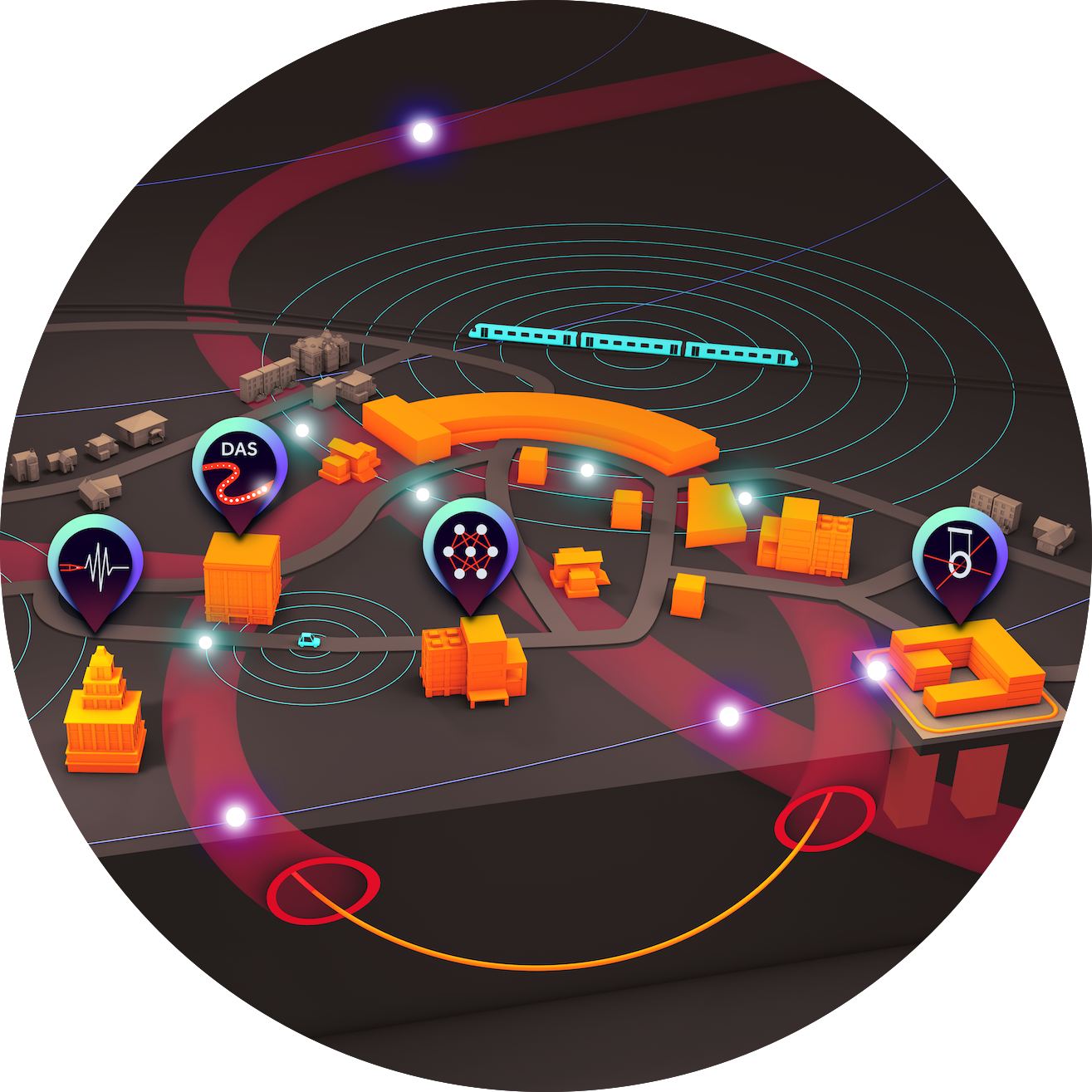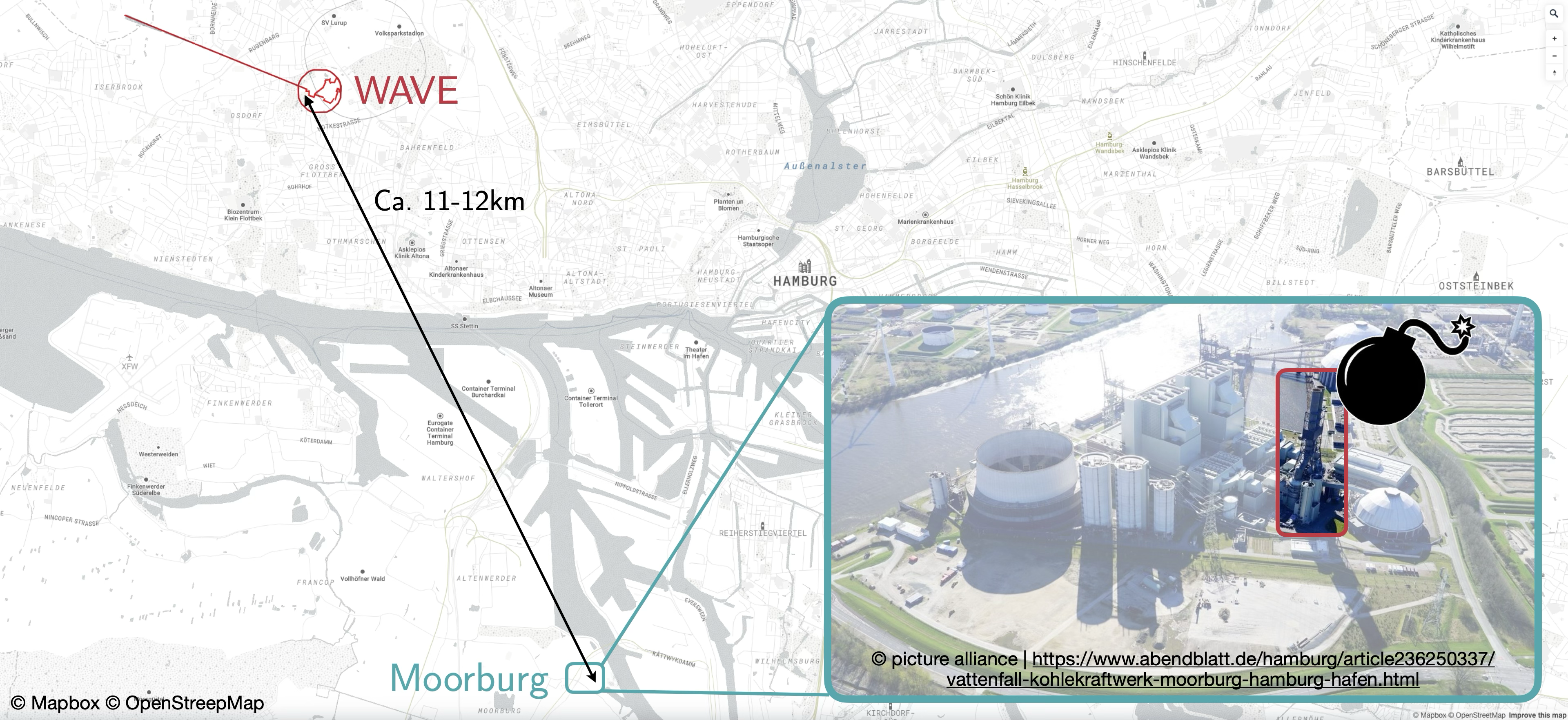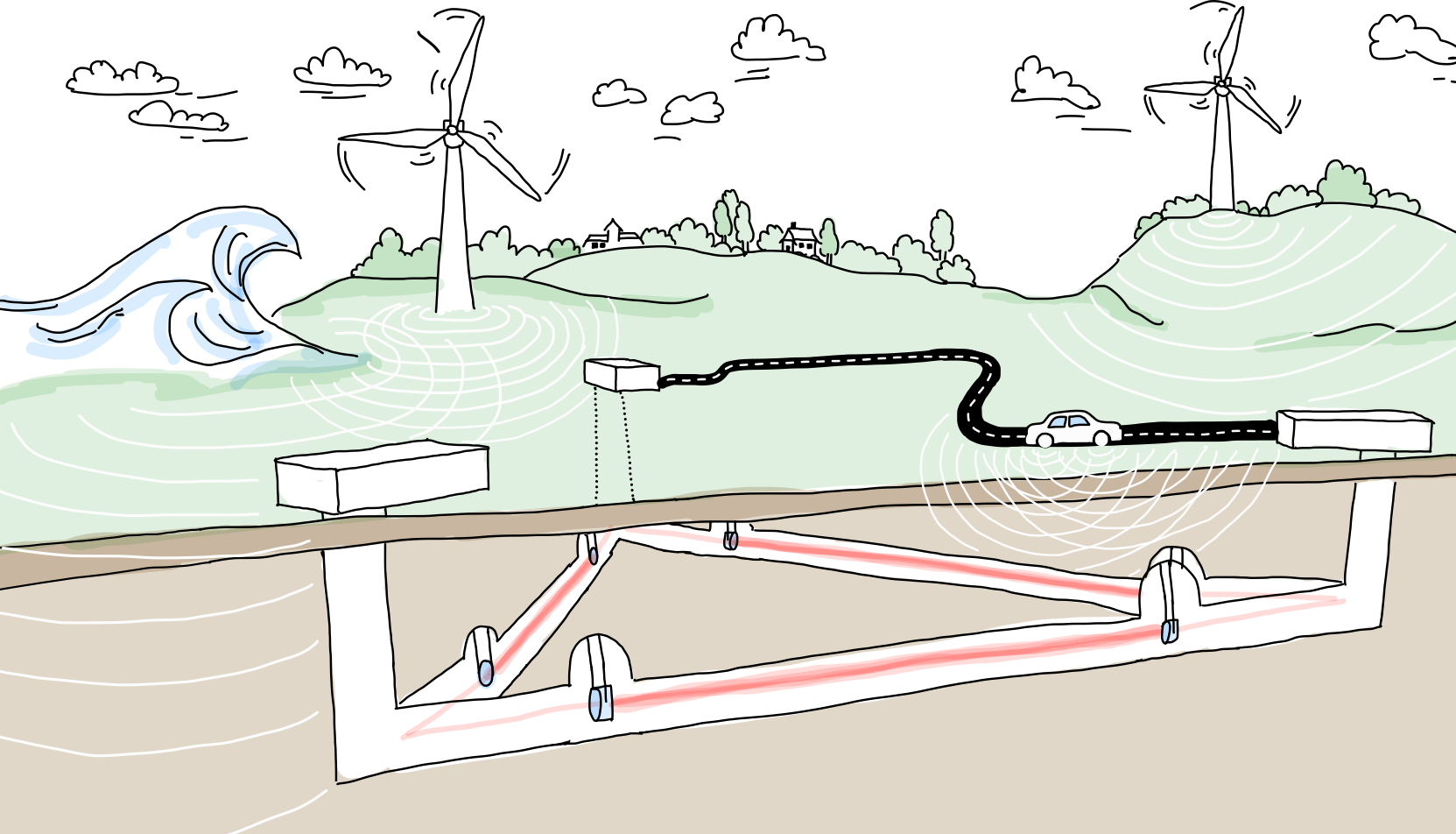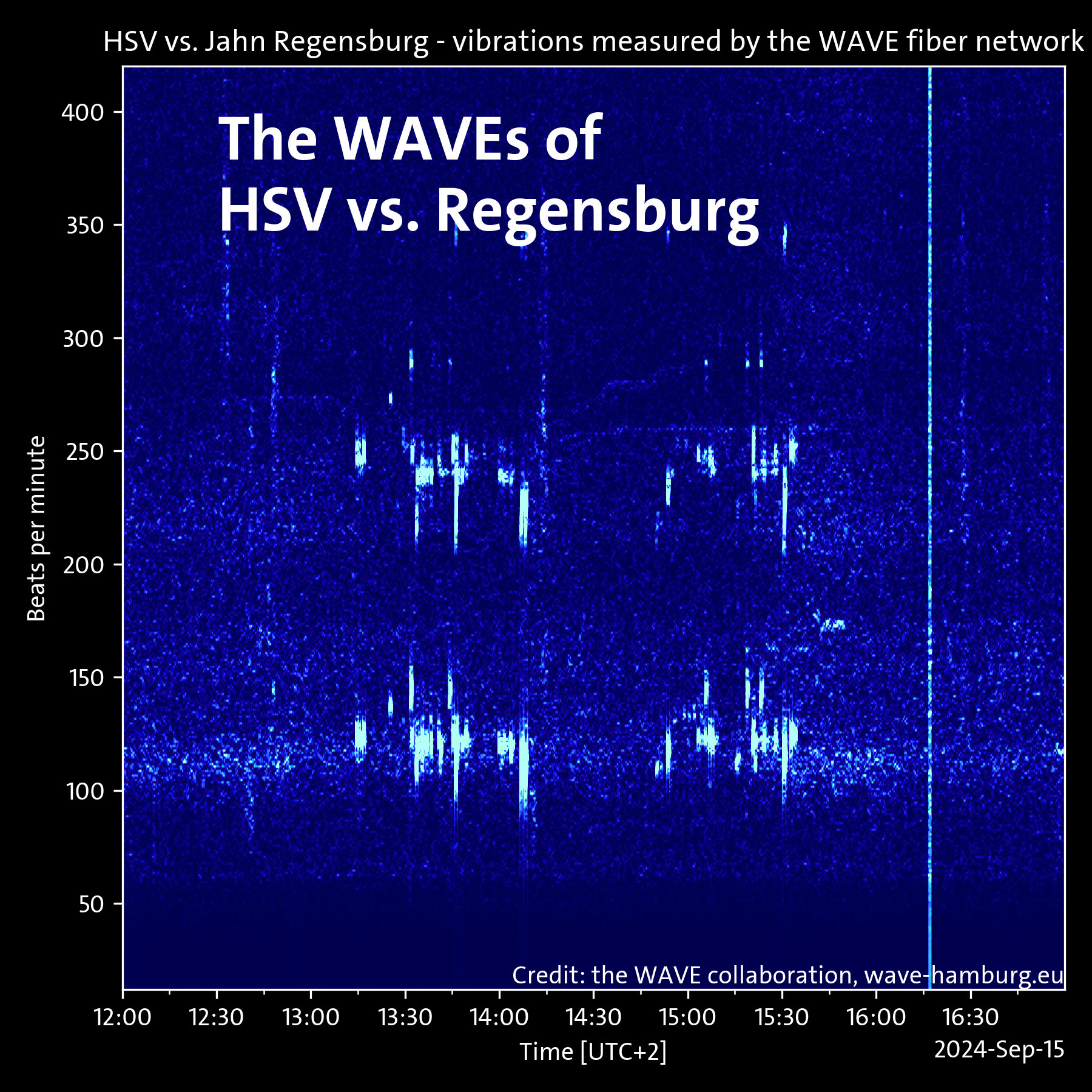Science City Day - Exploring the WAVE Network
On Saturday, June 1, 2024, from 11:00 AM to 7:00 PM, the WAVE team participated in Science City Day at the DESY campus. Visitors explored the fascinating world of our fiber-optic seismic network, discovering where the fiber was buried and learning how it works. Attendees had the chance to generate their own seismic waves and find out what happens when you jump around on a bouncy castle. It was a day filled with hands-on fun and learning!
The Idea
We wanted to create an engaging experience where visitors of all ages could interact with our distributed acoustic sensing (DAS) technology and learn how to read waterfall diagrams. Our goal was to make scientific measurements accessible and fun through interactive games. We asked ourselves what we could offer that would be both appealing and effective. Since no one had tried something like this before, it was an exciting challenge.
The Plan
We decided to unroll about 400 m of fiber that we already had on a spool and lay it out on a parking area, covered with rubber mats. This setup protected the fiber from being tripped over or damaged while allowing us to create a game: “Find the Fiber” beneath the WAVE-Field. The fiber was then laid from the parking lot into one of the adjacent buildings, routed over roofs and through bushes, and connected to the measuring device, the DAS interrogator.

In the photo, you can see a spool with the remaining 1,600 meters of fiber next to Katharina, who is working to get the software and live stream running with minimal latency.
After the rubber mats were delivered at the last minute on Friday afternoon, we had to figure out the best way to set everything up in the pouring rain.


WAVE-Field
The WAVE-Field was a rectangular chessboard pattern made from rubber mats with fiber laid beneath in a specific pattern. Visitors had to locate the fiber by jumping or walking on the mats while monitoring a screen. Since we could only stream a waterfall diagram at that time, identifying the fiber path proved challenging but not impossible. This taught visitors how to interpret a waterfall diagram.

Running Track
We also set up a long row of rubber mats with fibers coiled underneath, creating a running track. The coils produced diagonal lines in the waterfall diagram, which plotted time on one axis and fiber length on the other. Although the coiling affected the accuracy of speed calculations, children enjoyed racing along the track, trying to create steep diagonal lines. The waterfall diagram clearly showed the direction and interaction of runners as they crossed paths or overtook each other.

Roof Microphone
An unexpected discovery occurred when we set up the WAVE-Field and running track. We detected a strong signal in a section of the fiber leading to the WAVE-Field. The fiber had been routed through bushes and over doors and roofs to avoid tripping hazards. Our doctoral students traced the strong, unknown signal to a section of fiber over a door on a small roof.

They concluded that the signal was caused by acoustic vibrations and air pressure changes. When an airplane flew overhead, the fiber on the roof lit up dramatically on the live stream. This surprise finding enriched our scientific data, as we had been searching for aircraft signals in our WAVE network but hadn’t found any due to the mostly underground fiber routes. Thanks to Science City Day, we identified a fiber section where airplane signals could be “heard.”

Hit the Luke (Hau den Lukas)
We introduced another engaging activity involving a rubber hammer used to strike the ground anywhere on the campus. Remarkably, this action generated a clear signal across the entire fiber network, visible in the live stream as a vertical line—indicating a strong excitation at a precise moment in all fiber sections. Attendees were amazed by how far they could distance themselves with the hammer and still excite the earth, showcasing the sensitivity of the fiber and the DAS system.
Conclusion
Despite the bustling campus atmosphere with about 50,000 visitors that day, and initial uncertainties about the potential noise interference during setup, this event, like all others, functioned smoothly and exceeded our expectations.




